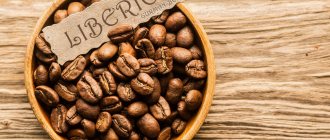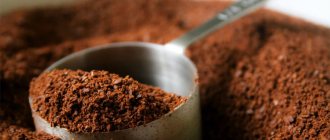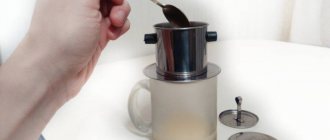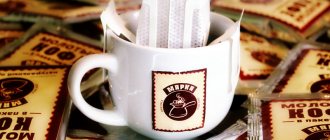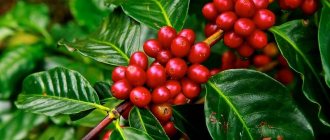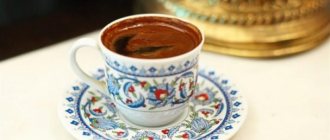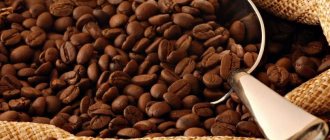Coffee continues its expansion in the city, and more and more enthusiasts are opening not only their own coffee shops, but also starting to roast coffee themselves. If a couple of years ago a pack of Barn coffee brought from Berlin evoked a lot of emotions, today interesting varieties and beans for every taste can be found at local roasters. Last weekend, a large coffee festival, Moscow Coffee Festival, took place at Trekhgornaya Manufactory. The Village audited local roasters and tells you where to buy fresh coffee.
Coffee Owl Roasters
coffeeowlroasters
Some of the city's main roasters started their business four years ago. Today, dozens of not only Moscow, but also Russian coffee shops use Owl beans, and barista Nastya Godunova has become the Owl brand ambassador. You can buy coffee in some coffee shops and markets, but the easiest way is to order online. The roasters offer blends that are best suited for making espresso, as well as the Red and Black lines - both can be used for any type of brew from espresso to funnel, but the black one can find interesting and rare varieties. Owl also has test boxes that hold five packs of coffee of different varieties: if you can’t decide on a choice right away, this is a convenient way to find beans to suit your taste.
Coffee production: range
Natural coffee of different origins has different flavors, so the following varieties are distinguished:
- Colombian – soft, pleasant taste, strong infusion, delicate, pronounced aroma.
- Guatemalan – delicate and delicate taste and aroma, good strength of the drink.
- Costa Rican – delicate aroma, pronounced sour taste.
- Honduran – well-defined aroma, mild wine taste of medium strength.
- Indian Cherry – pleasant, soft taste, delicate, pronounced aroma.
- Yemeni Hodeidah (Mocha) – very pleasant, slightly sour, bready taste, pronounced aroma.
- Kenyan – pleasant, slightly sour taste, well-defined aroma.
- Brazilian Santos No. 1-4 – bitter-astringent taste, weak aroma.
- Vietnamese Robusta – bitter taste, weak aroma.
- Indian Cherry AB, Cherry RV – bitter taste, weak aroma.
Coffee production and its defects
Defects in roasted and instant coffee are most often caused by poor quality of raw coffee, violation of production technology or roasting modes. The most common defects are:
- the sour smell and taste of coffee occurs due to self-heating of raw coffee beans or roasting moldy ones;
- charred coffee beans (the drink takes on the smell of charred wood and an unpleasant aftertaste) are formed due to the presence of blackened beans in raw coffee (the grain has been lying on the ground for a long time, poor drying), broken beans (ears, shells) and mechanically damaged (pressed) during processing, damaged pests (bark beetles, etc.), or in case of violation of the roasting regime;
- unevenly roasted grains are obtained due to insufficient drying of raw grains, the presence of raw grains in the horny and parchment shell;
- whitish grains are due to the presence in the raw material of unripe, raw grains that have dried on the tree (green or cherry color);
- undercooked grains appear due to the roasting of grains in the shells left behind due to poor cleaning;
- granules of unequal size in instant coffee occur when granulation technology is violated (insufficient moisture before granulation);
- insoluble sediment in instant coffee can occur as a result of technology violations, or when adding ground coffee or other ground additives (chicory, roasted grains, etc.);
- The smell and taste of rancid fat are formed during long-term storage of coffee and the occurrence of oxidative processes in it.
Cooperative "Black"
Address: Lyalin lane, 5
The Black cooperative is famous for its ideology, as well as patience and perseverance - the coffee shop has moved, closed and experienced ups and downs more than once. Now the cooperative has finally opened with a large, full-fledged coffee shop in the Pokrovka area, where you can also buy fresh coffee beans from our own roasting. The varieties change regularly, and from time to time there are test batches that cost a little less. In addition, the pack comes with a free glass of coffee, which makes the purchase even more enjoyable.
Geography of origin
The classification according to the geography of growing coffee trees is quite large. Plantations are located in more than 80 countries in Asia, Africa, Australia and America.
Australian
Coffee is in demand in the domestic market. It is grown in the east of the continent in northern Queensland on the Atherton Tablelands and south-west New South Wales.
Australian coffee grows in the subtropics at an altitude of 200 - 900 m above sea level.
The predominant varieties are Typica, Catay, Mondo Novo, and K7. In Australia, dry, wet and combined processing is used. A local company has developed the double pass method. The grains remain on the tree longer than usual. After collecting, they are immersed in water for 1 hour so that the shell becomes soft. At the same time, the sugar content in products increases by 20 - 30%.
Asian coffee
Traditionally, Indian, Yemeni, Indonesian and Vietnamese coffee are distinguished. The former grows in the districts of Maisery, Malabar, Coorg and Madras. Most of the plantations are occupied by robusta. The most common varieties are Kent, S795, SL9 and Kaveri.
In Yemen, Arabica is considered the most environmentally friendly in the world. The sites are located at elevations from 1000 to 2000 m on steep slopes. Elite varieties include Yemen Mocha Matari, Hodeidah and Sanani. In Indonesia, 90% robusta and 10% arabica are harvested. Famous plantations in Java are Blawan, Kayumas, Pankur and Jampit. In Sulawesi Thoraya, sweetness predominates, with nuts, fruits and maple syrup on the palate. In Sumatra, the varieties Ankola, Lintong and Mandeling grow in areas above 1000 m.
In the province of Aceh in northern Sumatra, coffee is grown, which is used in the Starbucks chain.
In Vietnam, coffee production is concentrated in the provinces of Dak Lak and the northern regions. Here they prefer to cultivate robusta (90%). Famous varieties include Blue Dragon and Sang Tao. Common types of Arabica are Bourbon and Catimor.
Arabica South America
Grains from Colombia, Brazil, Venezuela, Peru and Ecuador are valued on the world market.
The following coffee varieties grow in Colombia:
- Katura - grows at an altitude of 1500 m. There is no bitterness in it, but fruity notes are felt;
- Supremo is a thick drink with the taste of wine;
- Excelso - citrus fruits are clearly visible in the drink;
- Maragodzhip - characterized by a classic taste with cream and chocolate.
The Brazilian crop is used in mixtures for its medicinal flavor. A rare variety is Vilcabamba, which is produced in Ecuador. Peruvian coffee beans are popular in the domestic market.
Central America
In Costa Rica, coffee trees grow in the areas of Tres Rios, Alajuela and La Manita and Tarrazu. The latter variety is valued for its citrus aroma combined with milk chocolate. The prized Hawaiian Kona variety grows on the Mauna Loa and Hualalai volcanoes. In Guatemala, production is concentrated in Antigua, Fraijanes and Huehuetenango. The exclusive Blue Mountain grows on the slopes of the Blue Mountains in Jamaica. Often such grains are included in mixtures.
The Geisha variety from Panama is considered a favorite on the world market. The drink has an unusual taste, which is dominated by lime and berries.
African coffee
Africa is home to major coffee suppliers. The following brands of Arabica are grown here:
- Zambia Lupili;
- Malawi Mapanga;
- Uganda Bugishu;
- Sidamo;
- Jammah.
Kenyan plantations are located at 2000 m above sea level. Ethiopia is the only country where Arabica grows in semi-wild conditions. Arabica beans from Zambia are large in size.
Biji Coffee
Local roasters work directly with farmers and travel a lot in search of interesting coffee. First of all, you want to buy Biji coffee for the cool packaging with lemurs and other cute animals, you can do this directly on the page on Facebook and Instagram. Biji coffee can also be found in Coffee Bean coffee shops (albeit under the coffee shop brand) and in some Vkusville stores (also in supermarket packaging). But for the sake of the lemur, it’s still worth arranging for delivery directly from the guys.
How to choose good coffee for a coffee machine?
This choice directly depends on the preferences of buyers. Everyone has completely different tastes and it is impossible to say that one type of coffee will appeal to everyone. If a person has unpretentious tastes and does not have any individual wishes for this drink, then when purchasing such a product, you can focus on the following points:
- Type of coffee machine. This is important to understand what raw materials to purchase: grains, capsules or ground granules.
- Bean variety: Robusta or Arabica. The first option contains three times more caffeine than the second. It is bitter, slightly tart, and foams well. This type is very suitable for those who need to cheer up early in the morning. The second option is not very strong, rich, with a pleasant aroma, slightly sour in taste.
- Manufacturer country. You need to know this in order to understand where the berries come from and what they taste like.
- Grind level: for brewing coffee devices, it is preferable to use very fine or medium, possibly medium-fine.
- The degree of roasting of the beans: the darker they are, the more bitter, astringent taste you can get.
- Freshness of the product. We must not forget that coffee also has a shelf life: a year or two, on average. This is the time when it retains its taste to the fullest.
- Quality of packaging material. It plays an important role, since not every package is suitable for storing grains after opening. It is best to buy the product in hermetically sealed bags with a zipper or a valve.
- These are the main features that you should pay attention to before purchasing. If you don’t forget about them and approach your choice responsibly, then it won’t be difficult to find something very tasty among the existing variety.
Laboratoria Coffee
Address: st. Leninskaya Sloboda, 26
laboratoriacoffee
Laboratoria Coffee recently opened an outlet at the StrEat gastromarket (we suggest: look for it in the second hall), where you can always buy freshly roasted coffee, as well as drink signature drinks from champion barista Sergei Stepanchuk. In addition, coffee is sold in many coffee shops, including the small coffee shop “Coffemaus” on Mayakovskaya, as well as on the website wholesale or retail. The assortment includes several single varieties - from Colombia and Guatemala to different types of Ethiopia and Kenya - and, of course, various blends.
Types of coffee trees and their characteristics
Coffee trees are quite difficult to classify due to their wide variety. These can be 10-meter giants or very small dwarf shrubs. However, it is customary to distinguish 4 types of coffee trees:
- Arabica (Coffea Arabica) or Arabian coffee;
- Robusta (Coffea Canephora) or Congolese coffee;
- Liberica (Coffea Liberica);
- Excelsa (Coffea Dewevrei) or high coffee.
It should be noted that Arabica (70% of the world market) and Robusta (30%) are produced on a global scale. The remaining two types, similar in taste to robusta, are still not nearly as pleasant to the taste. Liberica finds its use only as mixtures in order to give the drink strength. But Excels has no economic significance at all.
Thus, what manufacturers write on the label is the type of plant, but in no case the variety. The only exceptions may be elite coffee varieties. This is important to know.
There are a great many varieties of coffee, more than two thousand. But coffee is extremely reluctant to be selected. Therefore, even if it is possible to cross several varieties of coffee and get a good harvest, its taste often suffers.
The variety is rarely indicated on the packaging, since in most cases coffee blends are used, which allows you to play with the taste and aroma of coffee.
Comparative characteristics of the main types of coffee are presented in the table.
| Arabica | Robusta | |
| Motherland | Ethiopia | Central Africa |
| Tree height | 3-8 meters | Up to 13 meters |
| Seeds | Plano-convex, elongated, with flat sides facing each other, the longitudinal groove is clearly defined | Small, round, have two small spots on either side of the groove |
| Growing height | 600-2500 meters above sea level | 200-900 meters above sea level |
| Desired temperature | +15 to +24 OS | From +24 to +30 OS |
| Required precipitation level | 1500-2000 mm | Withstands more than 3000 mm |
| Resistance to diseases, pests, frosts | Unstable | Stable |
| Reproduction | Grains | Cuttings |
| Productivity | Lower | Higher |
| Aroma | Tender, sour | Rich, rough |
| Caffeine content | Low | High |
| Fruit composition | Aromatic oils (18%); caffeine (1-1.5%). | Fragrance oils (8%), caffeine (3%) |
| Taste of coffee | Sweet, slightly sour, refined, less astringent | Stronger, astringent, rougher |
| Production cost | High | Low |
| Usage | As single varieties and in mixtures | For adding to mixtures and for the production of instant coffee |
Thus, for lovers of a strong, rich, bitter taste of coffee, varieties such as Robusta are perfect. Those who value a delicate aroma and pleasant taste in coffee should give preference to Arabica. Although some manufacturers mix these two types of coffee very skillfully.
The First Cup
Address: st. Nizhnyaya Syromyatnicheskaya, 10, bldg. 9, block D, 1st floor
A tiny coffee shop on Artplay roasts its own beans. For now, you can only buy coffee when you arrive at the coffee shop, but this is an excellent excuse to visit the cluster and stroll along the alleys. The assortment usually includes several single varieties in very black (and beautiful) packaging.
By growing height above sea level
Traditionally, high-mountain varieties are considered elite. The following markings are found on the packages:
- SHG - grains that grew in mountainous areas at an altitude of 1500 to 2000 m;
- HG - coffee was grown in the foothills (1000 - 1500 m);
- CS or MG - plantations are located on the plains.
There are designations SHGW and HGW. The last letter means that wet processing was used in the foothills or mountain areas.
"Doubleby"
double-b
It would be strange to do without Doubleby in the selection - the coffee chain occupies a leading position in terms of the volume of grain sold and the number of outlets in the city. Coffee here is much more expensive than other local roasters, but you can rely on the quality of the beans: the chain monitors its products and reputation very closely. In addition, finding Doubleby in the city will now not be difficult - there are about fifty coffee shops of the chain in Moscow, so you definitely won’t have to go far to buy a pack.
Classification of coffee by bean quality
Based on the quality of coffee beans, coffee can be high-grade, medium-grade, or low-grade. The international market offers a slightly different classification of coffee according to the quality of the beans.
- Mild is one of the mildest coffee drinks. Made from Arabica beans.
- Brazilian is the one that is collected on the plantations of Brazil. It is characterized by low cost.
- Robusta - all varieties of Robusta.
Video on the topic
The land of coffee - Bali
Click Play to view
Rocket's Coffee Roasters
Address: st. 4th Tverskaya-Yamskaya, 2/11
rockets.coffee
Rocket's coffee can be found in some coffee shops (for example, Roaster on Mayakovskaya) or ordered online: the online store is very convenient and will help you choose the right coffee depending on the brewing method, even if you are new to the coffee business. There are many cafes and restaurants in Moscow that use Rocket's coffee, so you can try the roasters' beans in advance.
By type of grinding
To make coffee, you need to grind the fruits. In everyday life, the degree of grinding is determined by touch.
Large
The maximum particle diameter is 1 mm and resembles coarse salt in appearance. It is obtained after grinding the beans in a home coffee grinder for 10 seconds. It is not found in retail sales; it is more often used during tastings.
Average
This method is universal. Coffee resembles fine sand. To obtain it, it is enough to hold the fruits in a coffee grinder for 10-15 seconds.
Small
The grains are ground to fine salt or powder. The first option is ideal for a coffee machine, the second - for brewing in a Turk. Grinding duration is up to 20 seconds. This releases caffeine, which contributes to bitterness.

